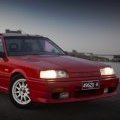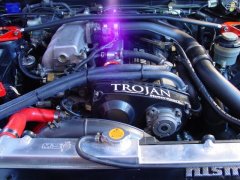Sa Sau Invasion Round 2
Announcements
-
Similar Content
-
Latest Posts
-
Gotcha, I mean that is at least good to hear. Are there signs, or troubleshooting tips to make sure the transmission is operating properly?
-
I'm hoping I just don't have to do an engine rebuild NOW. Doesn't mean I won't do it at some point. I think a plus point is that the car presumably ran on or close to stock power nearly all it's life so far. Only the Owner I bought it from actually increased power with a standalone ECU and blew the OEM turbos. And after it got thee 2860s it wasn't driven an awful lot either. That is what I meant. With the twins coming on so late (4500-5000rpm) I hope the rods won't want to exit the block prematurely. And it still being a 26 means the torque curve isn't gonna hike up all that much. It didn't blow up on the dyno when they tuned it to 500ish crank. So I suppose it'll be okay for now. They did put a Tomei head gasket on first though which did not seal at all, and they redid it with a Cometic one. Which I hope won't be my water leak. Mainly anything oil. So far all it has is the N1 pump, oil restrictor and a filter relocation kit with a cooler.
-
15000? ish? Something like that anyway. It wasn;t so much a wear as a tear that then spread. Might have lasted a lot longer if not bothered by just one incident, whatever it was. I took a punt. They are really comfortable and do a good job of holding. My daughter HATED it when I first put them in, and probably still does now. She has sensory issues and hates the way they are all up your business. I'm 197cm and 95kg. Not fat or particularly wide, and the XL size seat is the rigth fit. If I was any fatter it would start to get too snug. Any skinnier and you'd possibly want the smaller width.









Recommended Posts
Create an account or sign in to comment
You need to be a member in order to leave a comment
Create an account
Sign up for a new account in our community. It's easy!
Register a new accountSign in
Already have an account? Sign in here.
Sign In Now